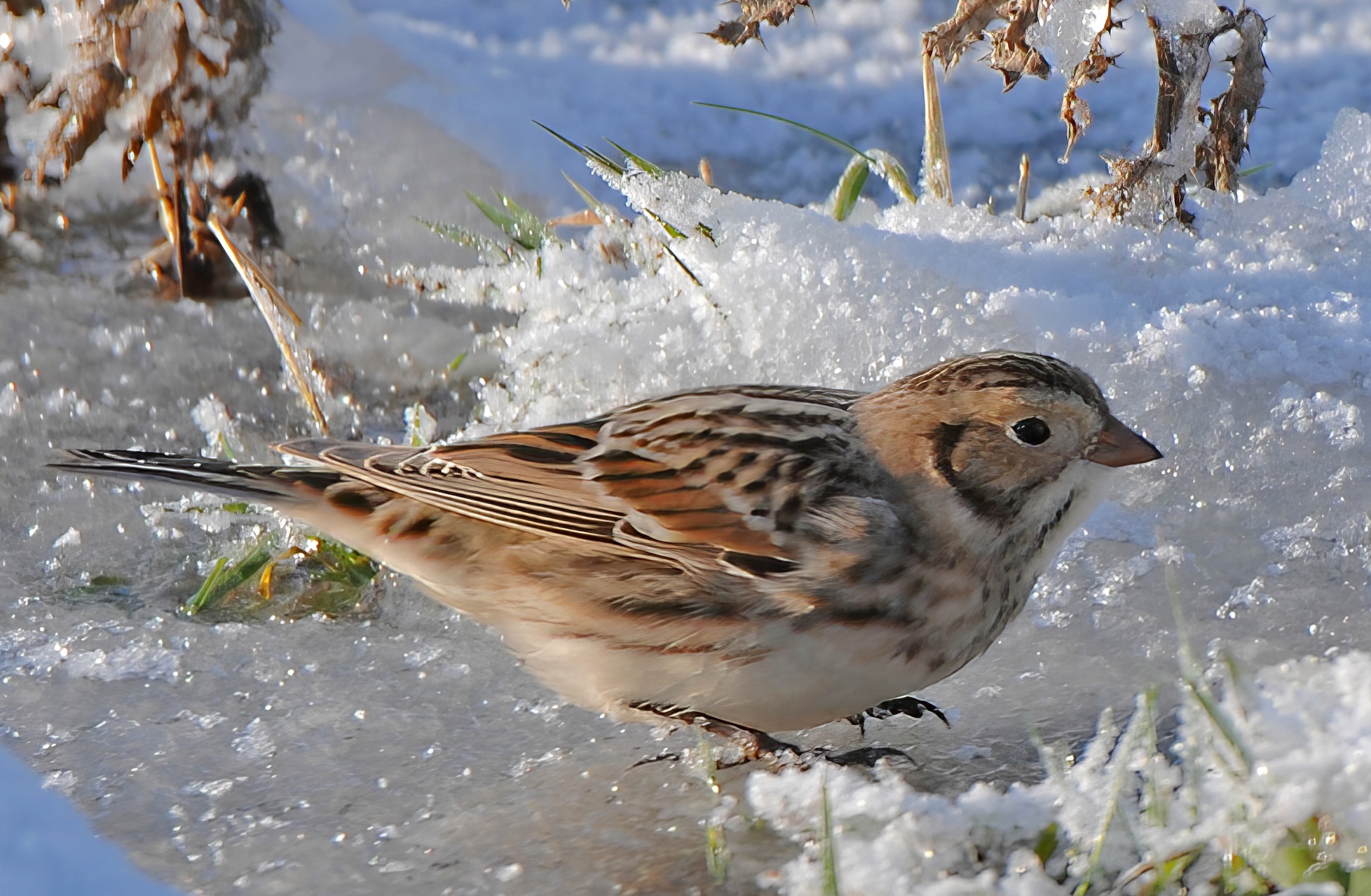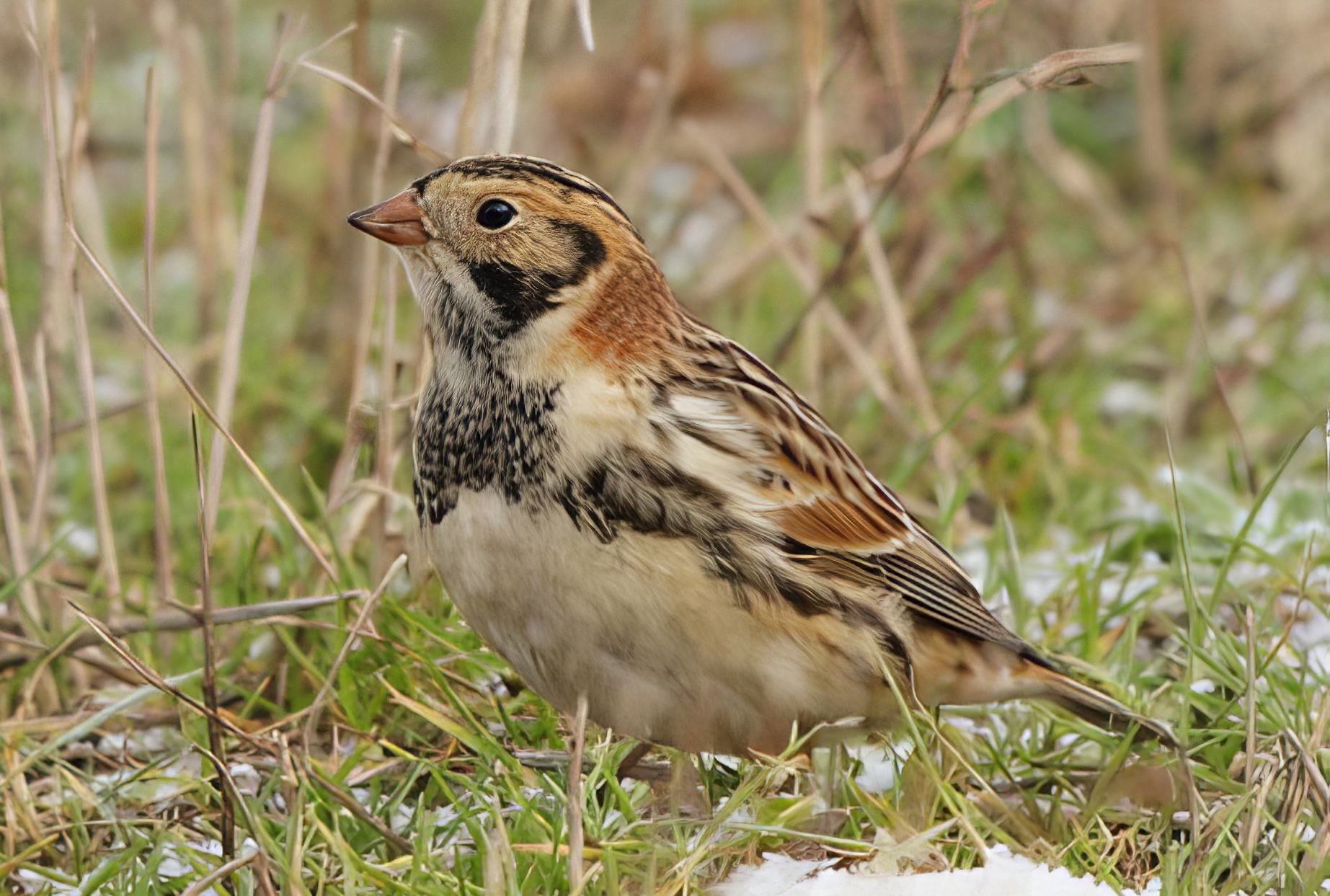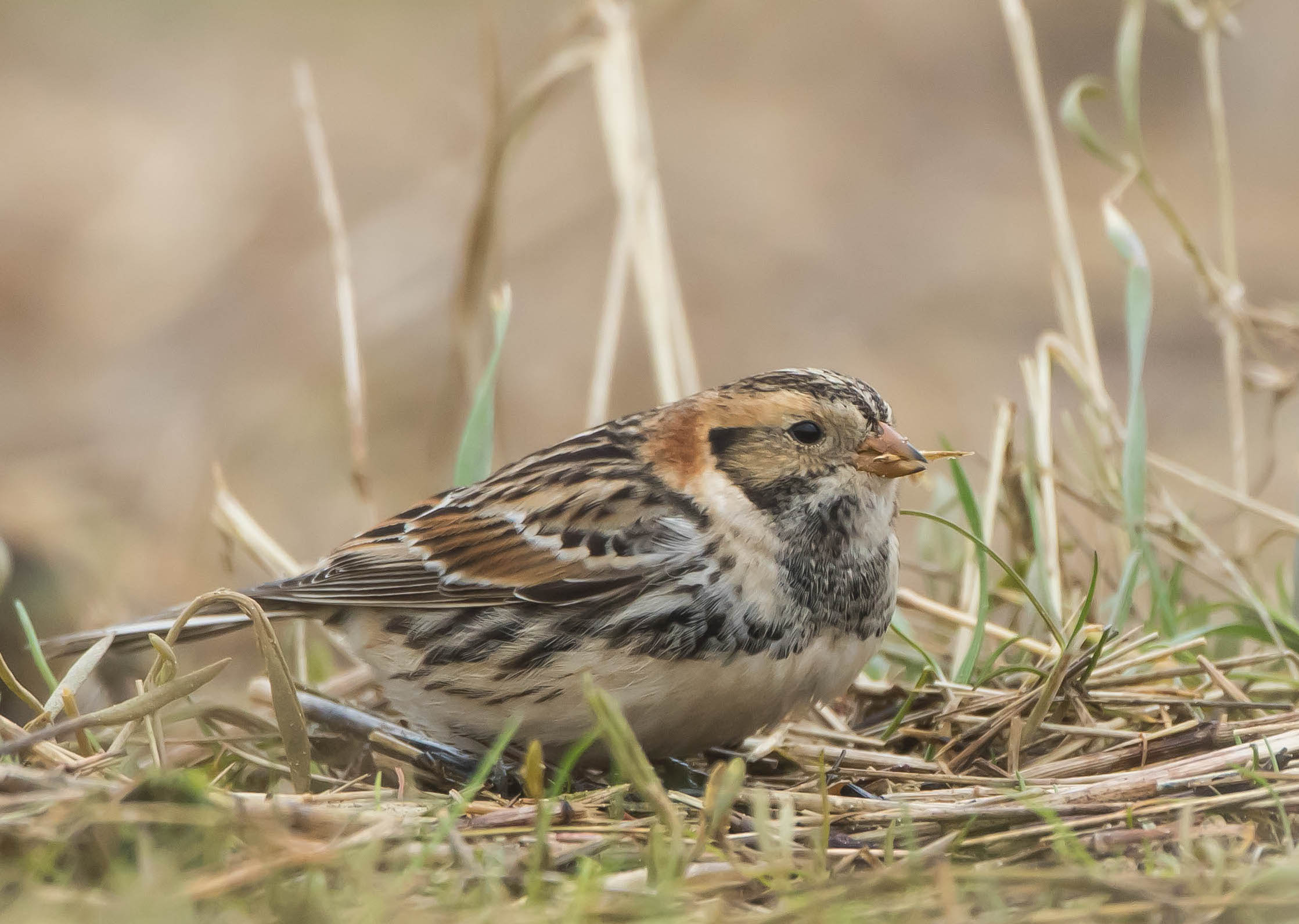Lapland Bunting Calcarius lapponicus
Nominate continental form a scarce local passage migrant and winter visitor Sep-Apr. Rare inland. The Greenland and Canadian form subcalcaratus may also occur.



Lapland Bunting is prone to influxes, and The Atlas described one such event in at the end of winter 1985/86 and into winter 1986/7 which led to a peak of 350 birds wintering on Butterwick Marsh in January 1986. Good numbers were again recorded in the autumn with several coastal flocks of 1-20 and 130 at Butterwick November 22nd and 156 December 6th. Into 1987, the Butterwick marsh flock remained in excess of 200 through January to mid-February; twenty-two remained until March 9th decreasing to two on March 22nd. This influx led to the first birds ever being ringed in the county with a modest 17 in 1985, 199 in 1986 and 85 in 1987, a total of 301 birds in all. Just one recovery resulted - a 1CY female ringed December 1986 found dead at Freiston in mid-January. In stark contrast in the modern era, 2010-21, not one was ringed, not even during the last 'invasion' in 2010 although saltmarsh and coastal trapping of this species is a somewhat specialised issue.
In 2010 huge numbers of Lapland Buntings arrived in Iceland and there was an astonishing flock of 184 on Fair Isle on the unusually early date of August 31st. This followed a very deep and a fast-moving Atlantic depression over Greenland which caused many 1000s of migrating Greenland birds to arrive early in Iceland and Britain. One or two were seen on the coast between August 30th-September 2nd and there was a minimum peak of 229 birds in the county that September-October. This was the biggest influx since 1985-87 and significant flocks were present at North Cotes (80), Donna Nook (55), Grainthorpe Marsh (40) and Tetney Marsh (25). Birds stayed on to winter and there were 83 at Frampton Marsh in December and 85 there in January 2011. To put that in context LBR reports for 2010 to 2019 show total peak site counts across the county ranging from 11 in 2018 to 404 in 2010 and 165 in 2011. The peak yearly average being 73 birds. More realistically the range over the eight years from 2012 to 2019 was 11 in 2018 to 61 in 2017 with an average of 26 birds per year. The best three sites in the period 2012-2019 were Donna Nook, which averaged 8-9 birds a year and had the best flock of 32 in Feb 2017; Gibraltar Point, averaging five, range 3-9; and Saltfleetby-Theddlethorpe Dunes NNR which averaged 4-5 per year, range 0-13. Birds can occur widely along the North Sea coast from Cleethorpes south and around The Wash to Nene mouth but for some reason are much rarer further up the Humber. Inland records are rare too. In the 10-year period there were just two, both in 2019: one at Middlemarsh Farm, just inland from Skegness in September and another at Scunthorpe in November.
(Updated with reference to the new Birds of Lincolnshire (2021) January 2023)
